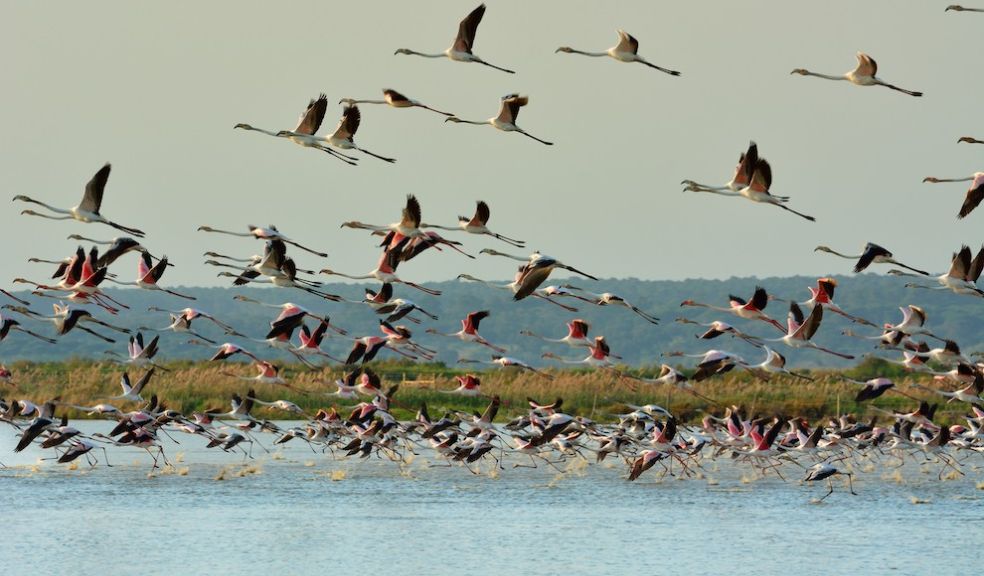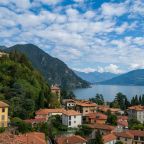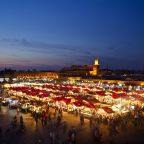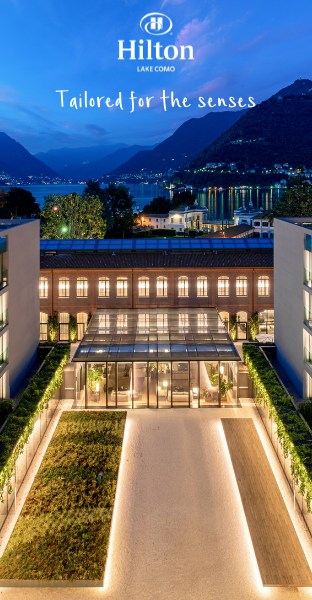
Lisbon’s Wide Open Spaces
Lisbon is famed for its vibrant city life, colourful buildings, historic monuments and great beaches, but it also has glorious green spaces, nature reserves, wetlands teeming with wildlife, ancient forests and spectacular coastal parks.
Here, the Lisbon Tourism Association, recommends six great options for getting out and about and discovering Lisbon’s wide open spaces.
Green hills and blue waters Just 30 minutes south of the city centre, across the River Tagus, lies the spectacular Arrábida Nature Park. Its green hills overlook the deep blue of the Atlantic, with steep trails leading down to secret coves and idyllic beaches, such as Portinho da Arrábida. Home to hundreds of species of butterflies, birds and mammals, the protected park covers Serra do Rosco, the highest point on the Portuguese coast. Visitors can hike or cycle along waymarked trails - some of the remotest routes only accessible with an official guide – or take part in more adventurous pursuits such as caving, diving and climbing.
The wild west Equally breathtaking is the Sintra-Cascais Nature Park, a place of steep cliffs leading to secluded beaches, pine-scented forests, lakes and a rugged coastline. The coastal journey from the dunes of Guincho to Cabo da Roca, Europe's westernmost point, is one of Portugal’s essential road trips. Rich with flora and fauna, local bird species include rare Bonelli’s eagles and Peregrine falcons. Hiking trails follow the cliffs with pathways down to the sands below, or veer inland to reach ancient ruins and beautiful vistas. The ocean winds that shape the dunes and whistle through the trees also make this a great area for windsurfing, surfing and bodyboarding.
Portugal’s largest wetland South of the Tagus river lies the Tagus Estuary Natural Reserve, the largest wetlands in Portugal and one of the most important refuges for migratory birds in Europe. This area of mud, marshes and salt pans combines three freshwater lagoons that are home to hundreds of bird species, with more joining as they rest on their migration south. Thousands of flamingos arrive in autumn, and egrets and eagles can be spotted along the riverbank. There are 5km of walking trails, with observatories and hidden hides providing incredible viewpoints of the birds in their natural habitat, and a visitor centre for those who want to learn more.
Discover dolphins on the Sado river The Sado Estuary, to the south east of Lisbon, is a conservation area of marshes, salt flats, sandbanks, rice paddies, woodlands and reed plantations. Another of Portugal’s best birdwatching locations, it is home to hundreds of bird species – along with thousands of waders that arrive in the winter - and a diverse range of aquatic life, including otters and dozens of bottlenose dolphins. Best sites for watching the birdlife include the 17th century Mourisca Tidal Mill, while the dolphins are best viewed from one of the many boat tours, including specialist tours on a traditional galeões do sal, which were once used for transporting salt.
Lisbon’s lungs Monsanto Forest, the capital’s largest green space, is known as ‘Lisbon’s lungs’ for the oxygen it provides to the city next door. The vast forest was replanted in the 1930s and is filled with eucalyptus, oak and pine trees, with dedicated picnic areas to be discovered among the trees along with sports facilities and a campsite. The woodlands are criss-crossed by hilly trails that are popular with walkers, runners and cyclists, and lead to incredible viewpoints of the city, Tagus River and the Atlantic Ocean below.
In the footsteps of Royalty The magnificent National Palace at Mafra was commissioned by King João V in the 18th century and is the most important baroque monument in Portugal. Surrounding the palace is the Tapada Nacional de Mafra, established in 1747 as the national hunting grounds to provide recreation for the king and his court and provide firewood and water. Surrounded by a 16km limestone wall, the forest is still home to wild boar, red deer, foxes and birds of prey, with signposted trails for walking, cycling and other activities. For more information, ideas and inspiration on visiting Lisbon, please go to https://www.visitlisboa.com/
















